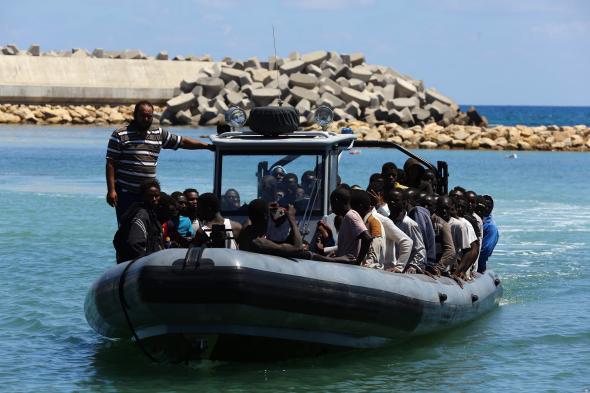Migrants often serve as the unwitting alarm bells of global crisis. It took the appearance of hundreds of unaccompanied minors at the southern border to wake U.S. leaders up to the gravity of violence in Central America. And it’s taken an unprecedented surge in migration from North Africa and hundreds of deaths in the Mediterranean to wake Europe up to the dangerous chaos in Libya. So far, though, it is hard to be optimistic about the continent’s response.
As part of the response to last month’s horrific capsizing of a migrant ship off the coast of Libya, EU ministers approved a plan Tuesday to establish a naval force to combat people-smuggling networks operating out of the country. The aim of the program is to intercept boats and destroy them, returning any migrants aboard to African ports. The plan is still being developed and will likely require the support of the U.N. Security Council, including a skeptical Russia.
The EU is also pushing Northern European countries to accept more migrants to ease the burden on overwhelmed Mediterranean countries like Italy, Greece, and Malta, but for now there seems to be more enthusiasm for the military approach.
To say—as many, including U.N. Secretary General Ban Ki-moon, have—that the EU’s plan doesn’t address the root causes of the migration crisis is both fairly obvious and not that useful. No conceivable plan out of Brussels or anywhere else could adequately address the range of factors—including violent conflict, political repression, economic distress, and environmental degradation—that are driving people to make the dangerous journey. But it’s hard to imagine much progress on even the comparatively modest goal of cracking down on smugglers as long as the situation in Libya remains as it is.
Libya’s descent into chaos since the fall of Muammar al-Qaddafi in 2011 has gotten far less attention than events in Syria and Iraq, but the situation is no less complex or dire. The country has two competing governments: the Islamist Dawn, which controls Tripoli, and Dignity, which enjoys international backing but has been pushed to the eastern port of Libya and is increasingly dominated by the anti-Islamist strongman Khalifa Haftar. Additionally, hundreds of rival militias control individual towns. The lack of governance has provided an opportunity for extremist groups, including some linked to ISIS, to operate and expand. It’s also allowed people-smugglers to operate with impunity, often robbing or physically abusing the migrants they transport on dangerous rickety boats.
As relations with Western nations improved in the last few years of his reign, Qaddafi cooperated with those governments in exchange for aid to prevent migrants from leaving for Europe. The late dictator, who often portrayed himself as a pan-African leader, was more than happy to play on European racial insecurities (and outright racism), warning during a visit with Silvio Berlusconi in 2010 that Europe would turn “black” with African migrants without his help.
Neither of Libya’s competing governments is enthusiastic about the EU military plan, which doesn’t bode well for Europe’s hopes of dismantling the smuggling networks and destroying the boats before they leave shore. A naval force can repel some boats, but as long as there’s demand for migration—which isn’t stopping anytime soon—and Libya’s chaos gives the smugglers room to operate, the larger crisis isn’t going away.
Internationally mediated peace talks between the rival factions have been slow-going, and governments around the world understandably have crisis fatigue from competing ongoing disasters in Iraq, Syria, and Yemen. But without some restoration of rule of law in Libya, it’s hard to see how the EU can even start to address this crisis, let alone actually resolve it.
Also in Slate, see the latest photographs from the European refugee crisis.
